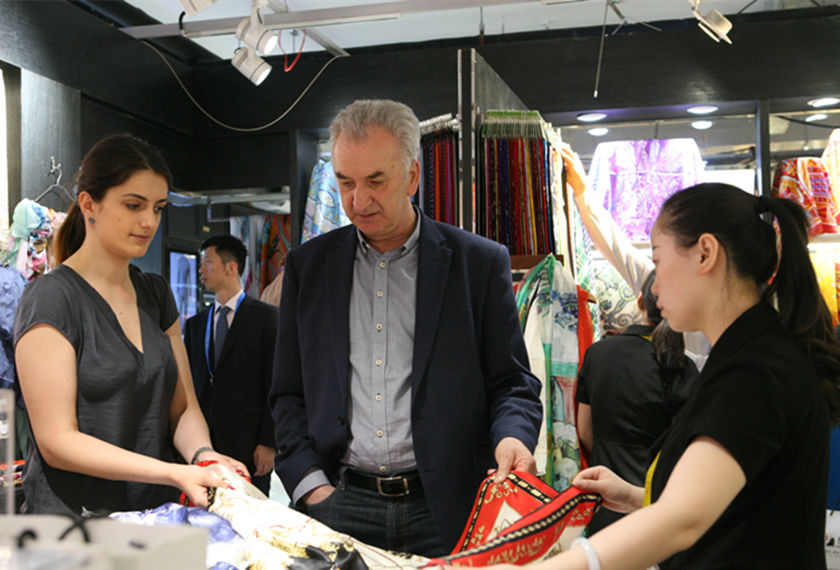Chinese Name: 秀水街 Pronunciation: xiù shuǐ jiē
Building Time: 1978
Opening Hours: 09:30-21:00
Suggested Visiting Hours: 1-3 Hours
Occupied Area: Over 1,800 square meters
Address: No. 8, Xiushui East Street, Chaoyang District, Beijing, China
Building Function: International tourism shopping market
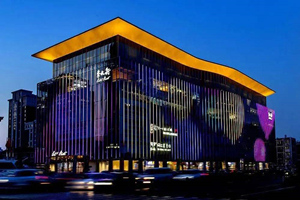
The Silk Street is located in Xiushui East Street, north of the bustling Jianguomenwai Avenue in Beijing. To the west is the diplomatic apartment, to the east is the residential building on Dongdaqiao Road, and to the north is the area of foreign embassies in China. The Silk Street covers an area of more than 1,800 square meters, of which the market facilities cover more than 1,000 square meters. There are 250 commercial kiosks, and more than 1,000 individual operators.
The Silk Street is located on the Chang'an Avenue extension line and is close to the international CBD business district, with a prominent geographical location and convenient transportation. It is the most influential international tourism and shopping market in China, as famous as the Great Wall and the Forbidden City.
The old Silk Street became a market in 1978. In the beginning, there were only a few shops scattered among the embassies and diplomatic apartments. At that time, there were not many residents nearby and the consumer market was not optimistic. Many years later, it has become a "civil trade center" for overseas tourists to go shopping. Silk Street is an export-oriented clothing market that mainly deals in clothing. With a complete range of products, novel styles, flexible transactions, and thoughtful services, it integrates tourism, sightseeing and shopping together.
It not only attracts a large number of domestic customers, but also is favored by a large number of foreign tourists. Among them, commodities with the most ethnic characteristics, such as fine clothing, silk, pearls, porcelain, tea, handicrafts, and Chinese food including Quanjude roast duck, are popular with consumers all over the world.
As a window of China's reform and opening up, the Silk Street enjoys a high reputation at home and abroad. Foreigners call it "OK" Street, Beijing's "Little Hong Kong", Beijing's "Little Paris", etc. Some economists even call it “the 21st century Along the River During the Qingming Festival cut out with the scissors of reform and opening up”.
Silk Street, together with the "Beijing Symbols" of the Great Wall, the Forbidden City and Peking Duck, has become a landmark for many tourists from home and abroad to travel to Beijing. Hundreds of nation leaders and their wives and countless international celebrities of culture and sports frequently visit the Silk Street, which demonstrated the unique status of the Silk Street as China's first foreign-related market.
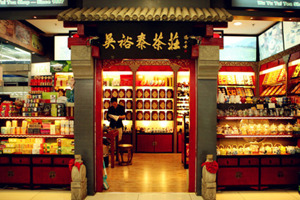
In 1978, the Silk Street Market was established and there were only a few shops at that time.
In August 1985, the Xiushui Market (Silk Street) was established and the commodities which sold gradually changed from daily necessities to clothing. Some merchants began to switch to silk clothing and handicrafts with Chinese characteristics. Then, the market quickly became popular as the "Chinese Silk Street".
In November 2004, the relevant departments of Chaoyang District, Beijing announced that they would demolish the old Silk Street and required all businesses to move into the newly built Silk Street building nearby.
In 2015, the new Silk Street was opened and the market was upgraded again. A large number of independent brands, designer brands, and private customized businesses were introduced.
At the beginning of 2017, nearly 500 stores in operation on the Silk Street have all realized corporate operations.
On the morning of August 11, 2008, Mrs. Anne, President Rogge’s wife, came to the famous Beijing Silk Street. Former US President George H.W. Bush and his daughter also visited the Silk Street, where they picked out six hand-embroidered dressing gowns.
In May 2015, Afghanistan's former President Karzai came to the Silk Street. He bought a number of silk products such as neckties and scarves. Besides, he repeatedly praised the silk for its beauty and also revealed that he bought so many scarves to give to relatives and friends.
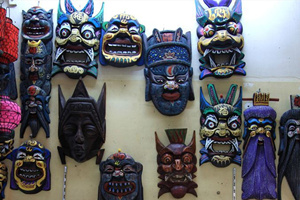
From January 8th to 9th, 2015, the First Ministerial Meeting of the China-CELAC Forum was held in Beijing. The heads of Latin American countries gathered in the capital. The Silk Street, which is transforming into a high-end market, attracts more attention. In just two days of the conference, it has received several political leaders from seven countries and has become the second scene of the China-CELAC Forum.
On September 3, 2015, the commemorative meeting of the 70th anniversary of the victory of the Chinese People's War of Resistance Against Japanese Aggression and the World Anti-Fascist War was held, and politicians from many countries were invited to attend. After the ceremony, the wives of politicians from many countries came to Silk Street to go shopping.
In May 2017, the first “Belt and Road” Summit Forum was held in Beijing. During the summit, the Silk Street received the presidents’ wives, ministers, mayors and other distinguished guests from many countries, and concentrated on more than half of the countries participating in this summit.
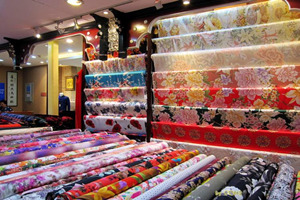
"REFOSIAN", China's leading brand of high-level customization, was founded in Jinan in 1862 (the first year of Tongzhi in the Qing Dynasty). It won the "Chinese Time-honored Brand", "The First Brand of Chinese Silk", "Intangible Cultural Heritage", “a Famous Brand Trusted by Chinese Consumers” and many other awards.
REFOSIAN 's business scope: silk and satin, woolen cloth, cotton cloth, leather goods, chemical fiber, ethnic clothing, etc. In recent years, REFOSIAN has already had its own "brand". It has applied for registration of its own logo based on the pattern of cicada-like locusts in mythology. It processed and produced multi-style ethnic clothing that reflects the unique charm of oriental women and Chinese silk.
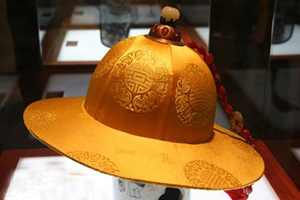
Sheng Xifu is a well-known time-honored brand in Beijing. It was originally a branch of Tianjin Sheng Xifu Headquarters, which opened in 1937. The hats produced by Sheng Xifu are famous for their exquisite materials, hand-made craftsmanship, exquisite workmanship, and high quality. Hence, they are widely welcomed by people from all walks of life at home and abroad. The reform and opening up promoted the development of Sheng Xifu.
The manufacturing process of Sheng Xifu leather hats is complicated. The exquisite materials, many hat-making techniques and fine workmanship are difficult to surpass. These complicated and strict production procedures have made Sheng Xifu leather hats beautiful and exquisite in appearance and comfortable to wear. Sheng Xifu has made hats for successive national leaders for many times and presented the hats to international friends. Hats are also deeply favored by the majority of consumers. "Wear Sheng Xifu" has become a symbol of people's pursuit of high quality in life.
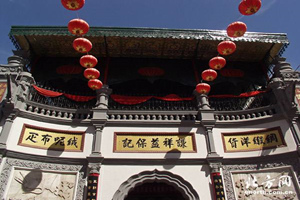
Beijing Qianxiangyi Silk Co., Ltd. (Beijing Silk Shop) is one of the eight famous silk shops in Beijing and Tianjin. Founded in the Daoguang Period of the Qing Dynasty (1840 AD), it is currently the largest and most comprehensive silk store in China.
Qianxiangyi specializes in silk products, which are divided into three parts: silk fabrics, silk garments and silk crafts. Among the clothing, various silk fabrics such as Chinese clothing, casual clothing, fashion, indoor living supplies, underwear and other green health care clothing, bring people a noble, elegant, natural and fresh modern feeling. As a traditional culture of the Chinese nation, silk handicraft shows its extraordinary charm. Qianxiangyi’s silk is embroidered with Chinese landscape paintings and Chinese classical stories. It is loved by tourists at home and abroad.
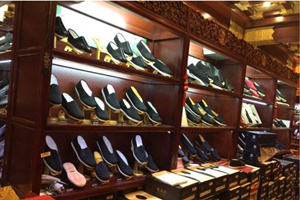
"Neiliansheng" was founded in 1853 (the third year of the reign of Xianfeng Emperor, the Qing Dynasty), and its founder was Zhao Ting, a native of Wuqing County. In the past, Neiliansheng made court boots for relatives of the emperor and court officials. Nowadays, Neiliansheng has developed into a Chinese national brand, a Chinese time-honored brand, a well-known trademark in China, and the first cloth shoe manufacturer in China. The craftsmanship of the multi-layered cloth shoes has been included in the Beijing Intangible Heritage List, which makes Neiliansheng be the only enterprise in the handicraft industry that has won this honor.
Neiliansheng's main products include handmade men's shoes, handmade women's shoes, machinery men's shoes, machinery women's shoes and children's shoes. Its products are made of pure natural materials, like cotton, linen and other raw materials. The soles are selected from high-quality hemp rope and the upper is selected from brocade. Therefore, the cloth shoes of Neiliansheng have the advantages of comfort, breathability, sweat absorption, and foot maintenance.
The manufacturing process of Neiliansheng strong cloth soles has been using traditional hand-made methods. There are more than 30 large procedures. Each process has strict and clear standards. The size, technique, and strength are required to be clean, neat and accurate. This kind of strict and clear process standards has even penetrated every movement of workers. The method of cloth shoe craft inherited way is the old pattern which the master passes on the apprentice. The emergence of this shoemaking technology of Neiliansheng is a remarkable achievement in the history of Chinese shoemaking.
Take Bus 28, 43, 120, 126, 403, 639, 673, or Night Bus 24, and get off at Yong'anli Lukou Bei Station and walk south for 3 minutes.
Take Bus 1, 9, 58, 619, 668, 668 Express, or Night Bus 1, and get off at Yong'anli Lukou Xi Station and walk east for 5 minutes.
By Subway
Take Metro Line 1 and get off at Yong'anli Station and get out from exit A.
By Taxi
Chinese: 请带我去秀水市场。English: Please take me to Silk Street.
If you go to Silk Street from Beijing Railway Station, it needs about 20 minutes (20 yuan).
If you go to Silk Street from Beijing West Railway Station, it needs about 40 minutes (45 yuan).
If you go to Silk Street from Beijing South Railway Station, it needs about 35 minutes (40 yuan).
If you go to Silk Street from Beijing Capital International Airport, it needs about 50 minutes (90 yuan).
